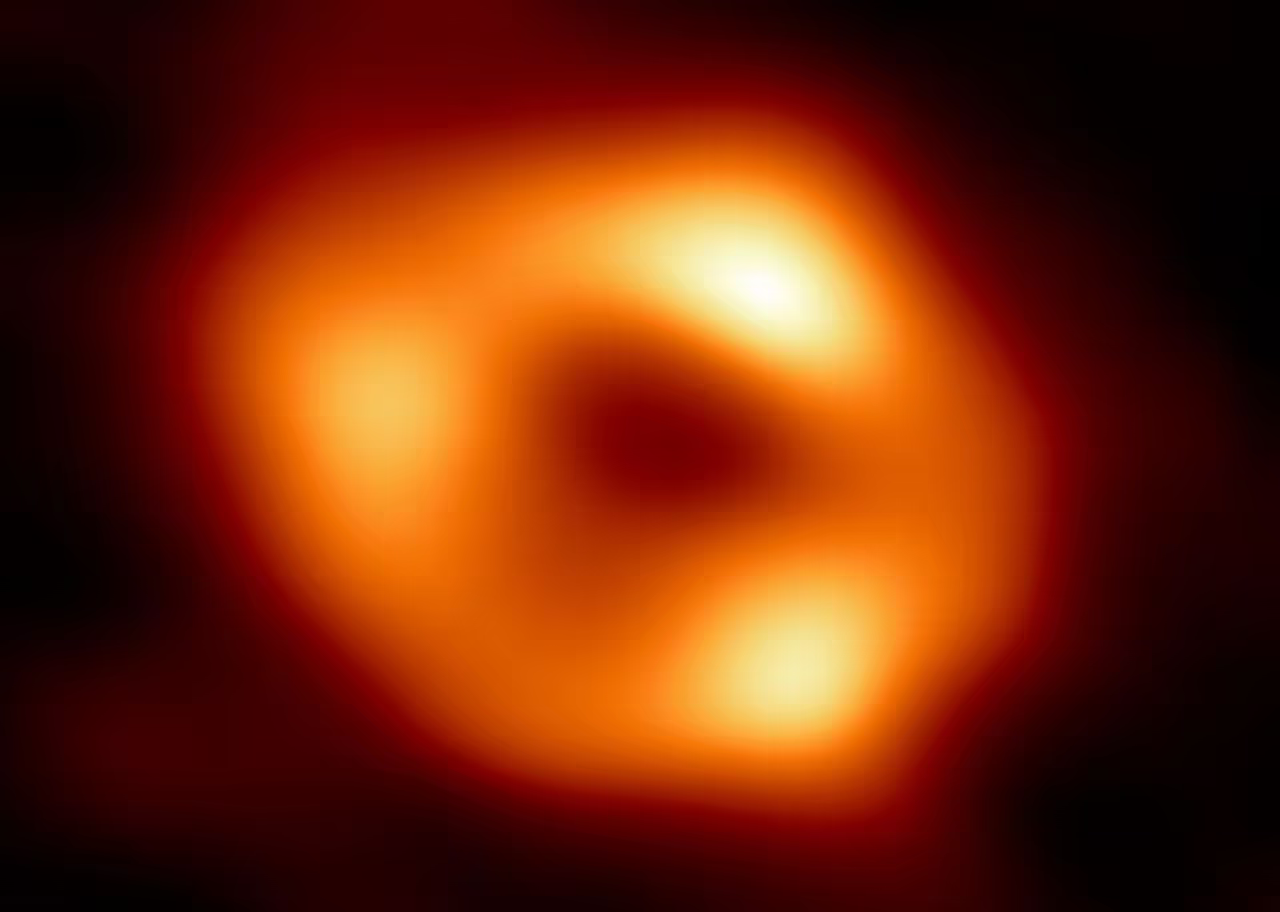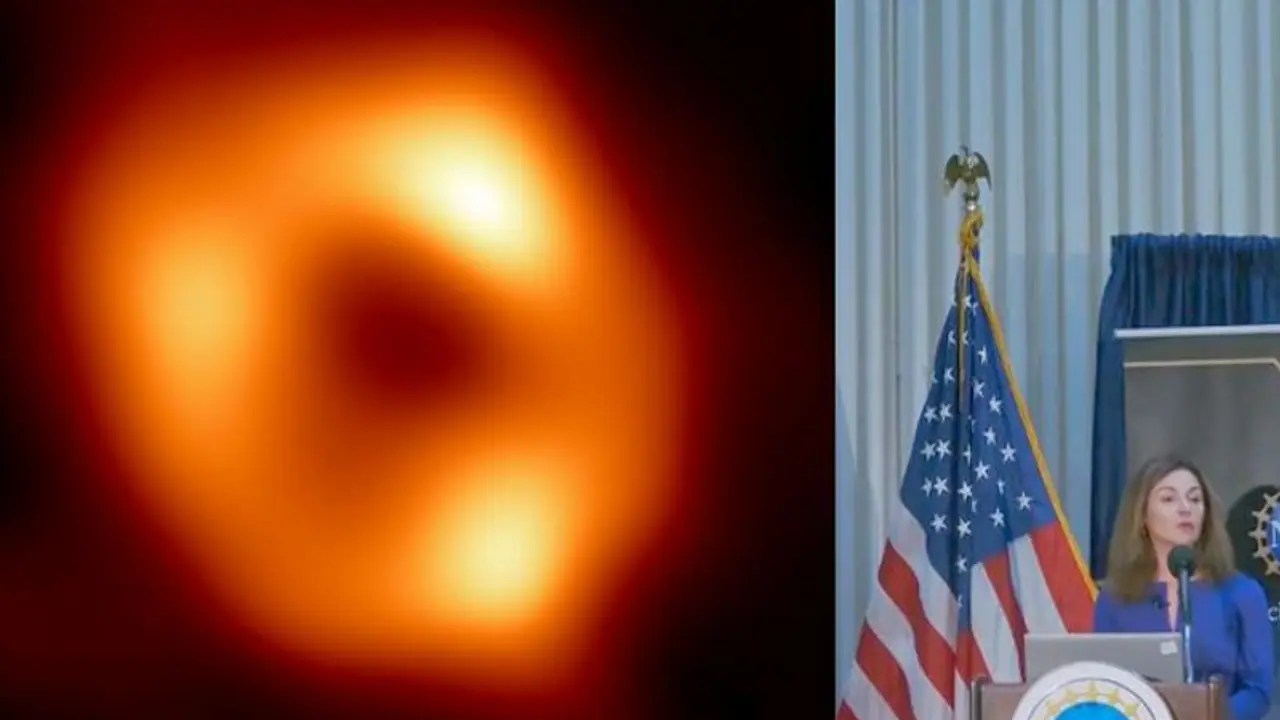Although the black hole cannot be seen by itself as it is completely dark, glowing gas around it reveals a telltale signature -- a dark central region surrounded by a bright ring-like structure.
Astronomers have just revealed the first image of the supermassive black hole at the centre of our Milky Way galaxy using the Event Horizon Telescope -- a worldwide network of radio telescopes.

Briefing media persons in Washington, DC, astronomers unveiled the first image of the supermassive black hole at the centre of our Milky Way galaxy.
Also Read: Zoom's new emotion tracking tech in controversy
The image, which was produced by a global research team, is a long-awaited glimpse of the massive object that sits at the very centre of the galaxy. Earlier, scientists had observed stars orbiting around something invisible and very massive at the centre of the Milky Way.

The image unveiled today is first direct visual evidence of the concludion that the object -- named Sagittarius A* (Sgr A*, pronounced "sadge-ay-star") -- is a black hole.
The image provides valuable clues about the workings of such giants, which are thought to reside at the center of most galaxies. Although the black hole cannot be seen by itself as it is completely dark, glowing gas around it reveals a telltale signature -- a dark central region surrounded by a bright ring-like structure.
The new view, according to astronomers, captures light bent by the powerful gravity of the black hole, which is four million times more massive than the Sun.
US National Science Foundation Director Sethuraman Panchanathan said: "This image is a testament to what we can accomplish, when as a global research community, we bring our brightest minds together to make the seemingly impossible, possible. Language, continents and even the galaxy can’t stand in the way of what humanity can accomplish when we come together for the greater good of all."
Calling this moment as historic achievement made possible by decades of intense curiosity-driven discovery research, Panchanathan said that NSF is proud to be an international partner that invests in this innovative research and the infrastructure that makes such fantastic discoveries possible.
Also Read: Google Pixel Watch announced, to launch with Pixel 7 smartphone
